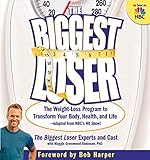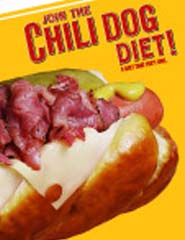Diet Book Review: Helping Your Child Lose Weight the Healthy Way
 I found Helping Your Child Lose Weight the Healthy Way at the library. I was looking for a book by this author on a completely different subject (Not Buying It : My Year Without Shopping). The library didn’t have the book I was looking for, but DID have this one. I thought I should check it out and see how it relates to my experience as an overweight child.
I found Helping Your Child Lose Weight the Healthy Way at the library. I was looking for a book by this author on a completely different subject (Not Buying It : My Year Without Shopping). The library didn’t have the book I was looking for, but DID have this one. I thought I should check it out and see how it relates to my experience as an overweight child.
What’s Good About The Book:
I knew I would like this book when I read the first page:
“A variety of factors can influence your child’s body self-image, but probably the most important is what family members do and say. Certainly, if siblings tease him about being fat or his grandmother offers suggestions for losing weight, the message will be that something is wrong with him. This likely to have a negative impact on the way he sees himself. And what family members do is as powerful as what they say.”
Judith suggests monitoring your child’s current eating and exercise habits in order to assess the situation, but she also suggests monitoring the family activity levels and the eating environment of your home.
“There is no generic eating plan that is appropriate for every child, or every chubby child – one side does not fit all. A cookie-cutter approach just doesn’t cut it.”
The beginning of chapter 8 says it all:
“Don’t put your child on a diet. We’ll say it again, for emphasis, ‘Don’t put your child on a diet.’ The truth is, diets don’t work for children any better than they do for adults. And worse, they can cause considerable harm to a child’s growth, health, psychological development and ability to learn.”
This book is down to earth in its approach to helping your children lose weight.
What’s Not So Good About The Book:
I’m uncomfortable with secretly monitoring what your child is eating. As an overweight child, I used to wish that my grandmother would just leave me alone. I always knew when she was tallying up what I had eaten. It’s not like you can hide something like that.
I think the best option is to provide healthy food and a good example. It’s your child’s body and if he or she wants to eat cookies all day, there is NOTHING you can do to stop them. The best thing to do is make sure there are healthy alternatives at home and have your child notice how you eat.
Should I Buy The Book?
Even though I agree with the nutrition and activity recommendations in this book, I’m reluctant to recommend it to a parent. There is no way you can hide a book like this from your child unless you only read it at work and it never goes home. Once your child sees the title of the book, an emotional blow will hit him or her in the gut. “Mom (or Dad) thinks I’m fat…” Do you really want to do that to your kid?
 Buy Walking Videos
Buy Walking Videos





 Mike wanted to go to Wienerschnitzel for lunch the other day. When we walked in, all the cups had advertisements for The Chili Dog Diet. I laughed happily to myself. It’s no stranger than any of the other diets I have seen over the last twenty years.
Mike wanted to go to Wienerschnitzel for lunch the other day. When we walked in, all the cups had advertisements for The Chili Dog Diet. I laughed happily to myself. It’s no stranger than any of the other diets I have seen over the last twenty years.